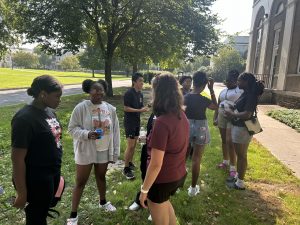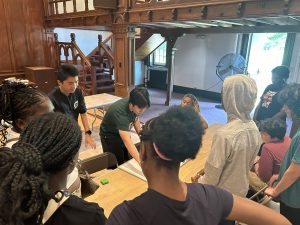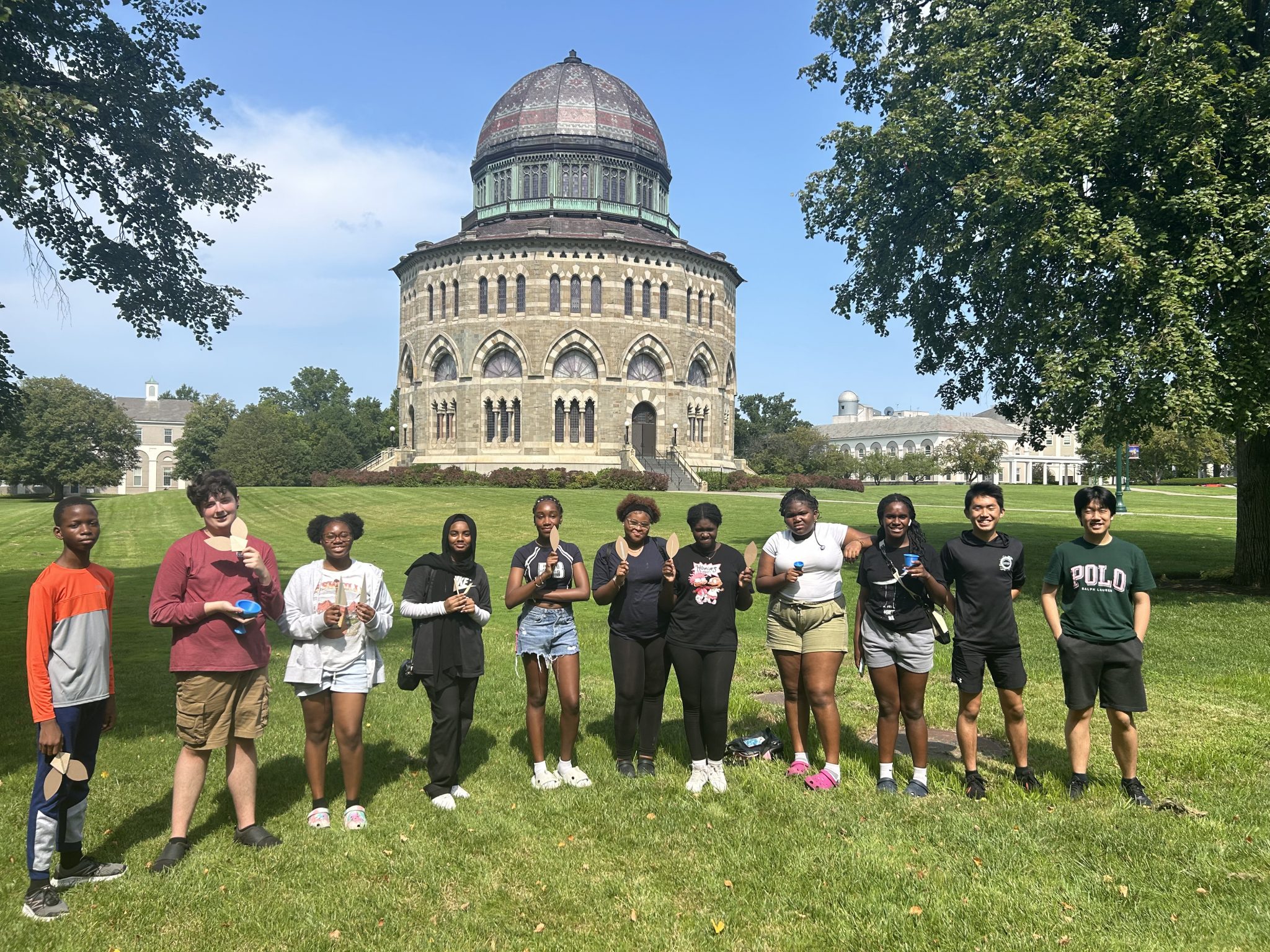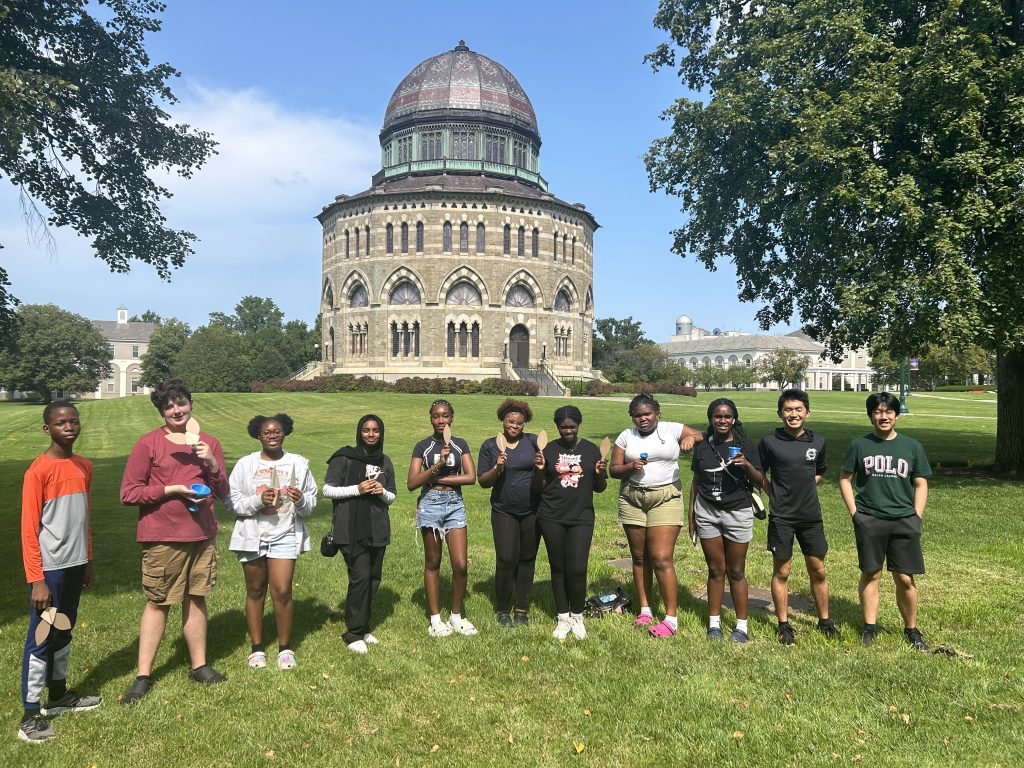Austin ’25 and Max ’25 share a passion for STEM with middle schoolers in their hometown focusing on hands-on, engaging experiments to help students extrapolate their lived experiences into unknown topics and ask questions.
This Summer we, Austin and Max, did a workshop like the one two years ago, where our goal was to introduce STEM activities to disadvantaged Middle Schoolers in downtown Schenectady. Most of these students were severely impacted by COVID-19, whether it was losing class time, or budget cuts by their school, they have lost out on valuable middle school time, where interests are piqued, and passions are unearthed. Our effort was not necessarily to teach the students loose STEM lessons, but to recreate and mentor some STEM experiences that the students may have lost due to the pandemic. Our central belief is that knowledge and hard work will naturally come if the interest is strong enough. In our second collaboration with the Union College Science and Technology Entry Program, we made a few modifications to our program and material to make the classes more engaging, interesting, and most of all, more about the students.
Our first experiment was the “Greedy Cup”, a 3d printed cup that seemingly emptied its entire contents through a hole in the bottom when its user got greedy and filled it up to past a certain threshold. Each student got to try the experiment for themselves, filling up different iterations of the cup with water. In all 3 of our experiments, we asked the students to make observations and hypotheses before testing and revealing the science behind them. Our first workshop with STEP was more lecture-based and we found that students were generally less interested. This time it was apparent that discussing in groups was a good way to encourage them to interact with each other’s ideas and stay focused. It was especially heartwarming when students started the day sitting by themselves and eventually opened up to the rest of the class. There were many hypotheses, ranging from air pressure to a cavity in the cup, and some even said it was magic. Eventually, we explained that the siphon effect was what caused the phenomenon, and the backstory of Pythagoras making the cup as a gift to his friends.
Our second experiment revolved around the CMY cube, a cyan, magenta, and yellow cube that uses subtractive coloration to mix and reflect colors in intriguing ways. The cube was also made of clear acrylic creating illusions. Students used handheld lasers and flashlights to observe how light bounced within the cube. It was another great segway into explaining the color theory and refraction to the students who were observant enough to find an illusory “mini cube” that appears inside the acrylic.
After lunch, we introduced our 3rd experiment: the windmill project that we did in Physics 1 at Deerfield. The students were provided wind turbine blades of all different shapes, sizes, and materials, and tasked with modifying, angling, and choosing the number of blades to use to spin the fastest. While some groups took minimalistic approaches, other groups got creative. One group took 4 sets of 2 fins of different materials and combined them all into 2 large blades such that the rod and the fins were planar to reduce air resistance. Their group ended up with the highest score at the end of the day.
While we designed and mentored the class, the STEP program was incredibly helpful in providing the space, food, and counselors and sending out flyers for the workshop. Overall, it was a fun experience for us as well and we both learned a lot about teaching and learning, all while making a difference in the community that raised us. Across the two years of working with the STEP program, it’s been a joy to see the students we work with interact with STEM in a way that we often take for granted at Deerfield. STEM education during the primary and secondary stages of education is crucial even if students don’t plan on pursuing a STEM career. Just like how Deerfield and even many undergraduate institutions emphasize liberal arts education because of the way it shapes a student’s ability to think and learn critically, a robust STEM education teaches students how to extrapolate their lived experiences into unknown topics and ask questions. In just these short workshops, we have gotten to know so many students with great minds who are intuitive to STEM topics and it’s been the greatest pleasure to see them walk away at the end of the day telling their parents about how they learned.





